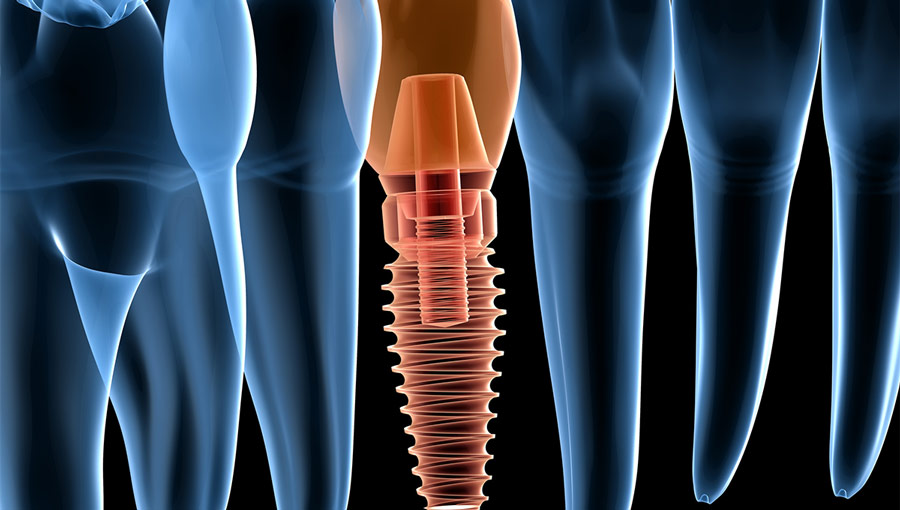11 Apr 2025
How Soon Can You Get Dental Implants After a Tooth Extraction?

What Every Patient Should Know
If you’ve recently had a tooth removed—or are about to—you may be wondering:
“How long do I have to wait before getting a dental implant?”
It’s a great question—and one that can dramatically affect your long-term dental health, appearance, and even treatment cost. As a dental implant specialist, I often walk patients through the best timing for implant placement after tooth extraction, because doing it right can make all the difference.
In this article, I’ll explain the three main timing options for placing dental implants after an extraction, discuss their pros and cons, and help you understand what might be best for your specific situation.
Why Timing Matters in Implant Placement
After a tooth is extracted, your body immediately begins to remodel the surrounding bone. Without the stimulation of a tooth root, the jawbone in that area shrinks and weakens over time—a process known as bone resorption.
This bone loss can:
- Change the shape of your jaw and face
- Make future implant placement more difficult (or even impossible without grafting)
- Complicate your ability to chew or speak clearly
That’s why timing your implant correctly is essential for long-term success.
Three Options for Implant Timing After Extraction
1. Immediate Implant Placement (Same-Day)
This approach places the dental implant on the same day the tooth is extracted.
Best For:
- Patients with healthy gums and bone
- Front teeth or other visible areas
- Those looking for a faster solution
Pros:
- Fewer surgeries (extraction and implant in one visit)
- Faster overall treatment time
- Preserves jawbone and gum contours
- Immediate temporary crown may be placed
Cons:
- Not ideal if there’s infection or bone damage
- Requires precise surgical technique
- Healing may take longer if conditions aren’t ideal
Doctor’s Note: "Same-day implants are one of my favorite solutions for the right patient—it’s efficient and preserves bone beautifully."
Insert Infographic: Timeline showing tooth extraction + implant + temporary tooth on Day 1
2. Early Implant Placement (6–12 Weeks After Extraction)
Also known as delayed-immediate placement, this option waits a few weeks after extraction, allowing soft tissue to heal before placing the implant.
Best For:
- Sites with mild infection
- Areas with minor bone or gum defects
Pros:
- Allows time for soft tissue healing
- Easier to detect infection or healing issues
- Still preserves most bone
Cons:
- Two separate procedures
- Slightly longer total treatment time
3. Delayed Implant Placement (3–6+ Months After Extraction)
In this traditional approach, the dentist waits until full healing of the socket before placing an implant.
Best For:
- Areas with significant bone loss or infection
- Patients needing bone grafting first
- Those not ready for implant surgery right away
Pros:
- Completely healed tissue and bone for a stable foundation
- Can combine with bone grafting for ideal results
Cons:
- Higher risk of bone shrinkage
- Often requires bone grafting to rebuild lost bone
- Longer treatment timeline (can extend to 9–12 months total)
Insert Chart: Comparison of three timing options with pros/cons, healing time, risk of bone loss
What Determines the Right Timing for You?
Your implant dentist will evaluate several factors, including:
- Bone quality and volume at the extraction site
- Presence of infection or periodontal disease
- Location of the tooth (front vs. back)
- Your general health and immune response
- Your preference for treatment speed vs. caution
At Fusion Dental Implants, we use 3D CBCT scans and detailed diagnostics to recommend the safest, most effective approach tailored to your case.
What Happens If You Wait Too Long?
Delaying implant placement for more than 6–12 months after an extraction often leads to:
- Severe bone loss, requiring grafting
- Gum tissue collapse, making aesthetics harder to restore
- Shifting of adjacent teeth, altering bite and jaw alignment
Doctor’s Insight: "I always tell patients—if you’re not replacing the tooth immediately, at least preserve the bone with a graft or socket preservation technique."
What If You’ve Already Had an Extraction Years Ago?
If your tooth was removed years ago and you didn’t replace it, don’t worry—it’s still possible to get implants. However, we’ll likely need to:
- Evaluate bone with a CBCT scan
- Perform bone grafting or sinus lift if needed
- Use longer or wider implants or advanced techniques like zygomatic implants
Modern implant dentistry has solutions for almost every case!
Real Patient Story: James Gets an Implant the Same Day
James, a 45-year-old patient, came in with a fractured molar. We removed the tooth and placed a dental implant the same day. He went home with a temporary crown and returned three months later for the final tooth.
James says: "I was expecting a long wait and multiple surgeries, but it was so smooth—and painless. I wish I had done it sooner."
Final Thoughts: Timing Can Make or Break Implant Success
The best time to get a dental implant after tooth extraction? It depends—but sooner is often better.
Whether you’re eligible for same-day placement or need a healing period, working with a qualified implant provider ensures you get a solution that protects your bone, saves time, and delivers a beautiful, functional smile.
At Fusion Dental Implants, we’ll evaluate your case with expert precision and guide you to the ideal timing and approach.
Schedule Your Implant Consultation Today
Find out if you’re a candidate for immediate dental implants—or what the best next step is for your smile.
Ready to Start Your Implant Journey?
Call 916-866-7595 or visit to take the first step toward a beautiful, confident smile!